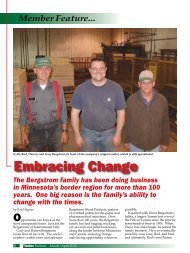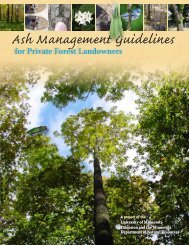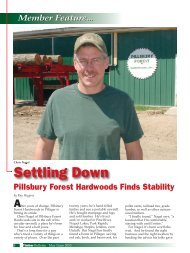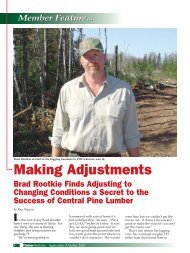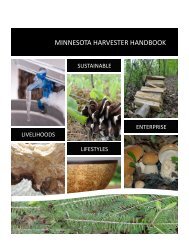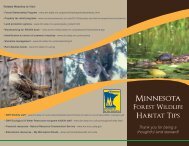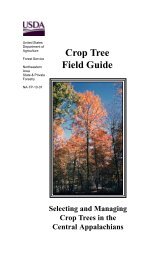Ash Management Guide for Private Forest Landowners
Ash Management Guide for Private Forest Landowners
Ash Management Guide for Private Forest Landowners
You also want an ePaper? Increase the reach of your titles
YUMPU automatically turns print PDFs into web optimized ePapers that Google loves.
Chapter 6WildlifeAmong the <strong>Ash</strong>GLOSSARYcavities: Holes in treessometimes used <strong>for</strong> nestingand reproduction by wildlifespecies, most frequently birdsor small mammals.<strong>Ash</strong> stands and ash trees are usedby a variety of wildlife speciesincluding large and small mammals,birds, reptiles, and amphibians.When ash stands and trees are older, theyprovide value as feeding sites <strong>for</strong> woodpeckers,nuthatches, and chickadees.Cavities in these same trees, whenfound near permanent wetlands, are alsoused by several species of waterfowl includingwood ducks, hooded mergansers,and goldeneyes.In northern Minnesota, large cavitiesmay also be used by fisher as den sites.Several species of birds use ash standsas nesting sites including great blue andgreen herons, and Cerulean warbler.Birds, however, tend to be linked to habitattype not tree species so while birdsmay be temporarily impacted by the lossof ash, they are likely to adapt and moveto other trees in the surrounding area. Asyounger trees or stands, ash is an importantsource of food <strong>for</strong> white tailed deerand moose. <strong>Forest</strong> landowners shouldmanage <strong>for</strong> a variety of age classes whenmanaging their ash resource becauseof the various values those resourcesprovide in different age classes or growthstages.For more in<strong>for</strong>mationon rare species on yourproperty, see AppendixC, on page 65.Moose are onemammal speciesfound in ashsystemsPhoto: Douglas Brown54



